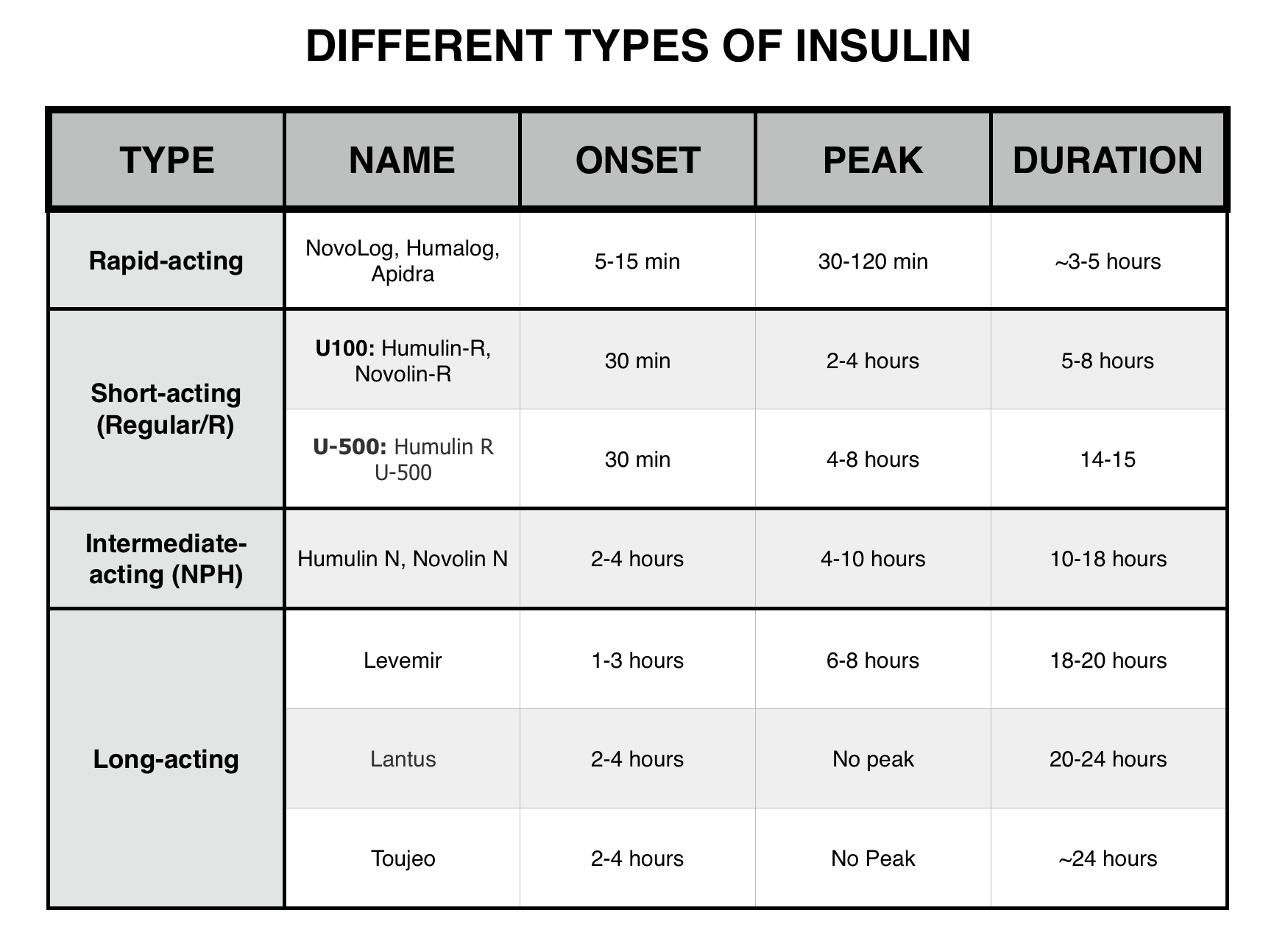Page Contents
OVERVIEW
This page is dedicated to covering the different options that exist for the treatment of diabetes with insulin. It is misleading to be under the impression that the decision to treat a diabetic patient with insulin stops there. Not only are there many types of insulin, but many different dosing regiments as well!
THE BASICS
Insulin is the hormone normally made by the pancreas that clears glucose from the blood stream.
DIFFERENT TYPES OF INSULIN
Given how confusing things can get, lets take a look at the table below (source) that organizes insulin by type and provides some insight into key characteristics.

Now lets go through the major types of insulin and explain what they are! Timing is everything when considering different insulin medications (onset, peak, duration).
Rapid acting insulins are those that will work quickly after their injection. Per the table above we can see that the onset of action is comparatively very rapid (as the name suggests…) the peak is achieved quickly, however it is also important to appreciate that the duration is also shorter (easy come easy go). An example is the medication Humalog.
Short-acting insulins (Regular/R): these types of insulin have a slightly longer time until the onset and peak. Their duration is also longer then rapid acting.
Intermediate-acting insulin (insulin isoprene suspension/NPH): this type of insulin is a unique formulation whose onset is longer then both rapid/short acting insulins, but will last for a longer duration.
Long-acting: exactly as the name suggests, this type of insulin works for a very long duration of time (however its onset is slower compared to other options). A popular example is the medication Lantus.
USING INSULIN: TYPE 1 DIABETES
In the setting of type 1 diabetes some utilization of insulin is a requirement (simply because the body will not produce any amount of insulin in the setting of this disease). With this in mind tailoring the treatment regiment to the patient is important. Typically most patients will require multiple injections every day (explained more below).
Basal/bolus: this dosing regiment refers to one that aims to mimic normal physiology as closely as possible. This regmeint has two major components that are dosed separately:
- Basal insulin: this serves to replace the baseline insulin requirement that normally is fulfilled by a healthy pancreas. Typically a long acting insulin is given 1-2 times a day (to fulfill ~50% of the daily needs for insulin) to cover baseline and fasting insulin requirements.
- Bolus insulin: this is used to replace prandial insulin needs after meals. A rapid-acting insulin is given before meals/snacks. The dose can be a bit more extensive to calculate, as it is based on the amount of carbohydrates in the meal plus the degree of preprandial hyperglycemia.
FURTHER READING
American Diabetes Association Guidelines
Page Updated: 05.25.2016